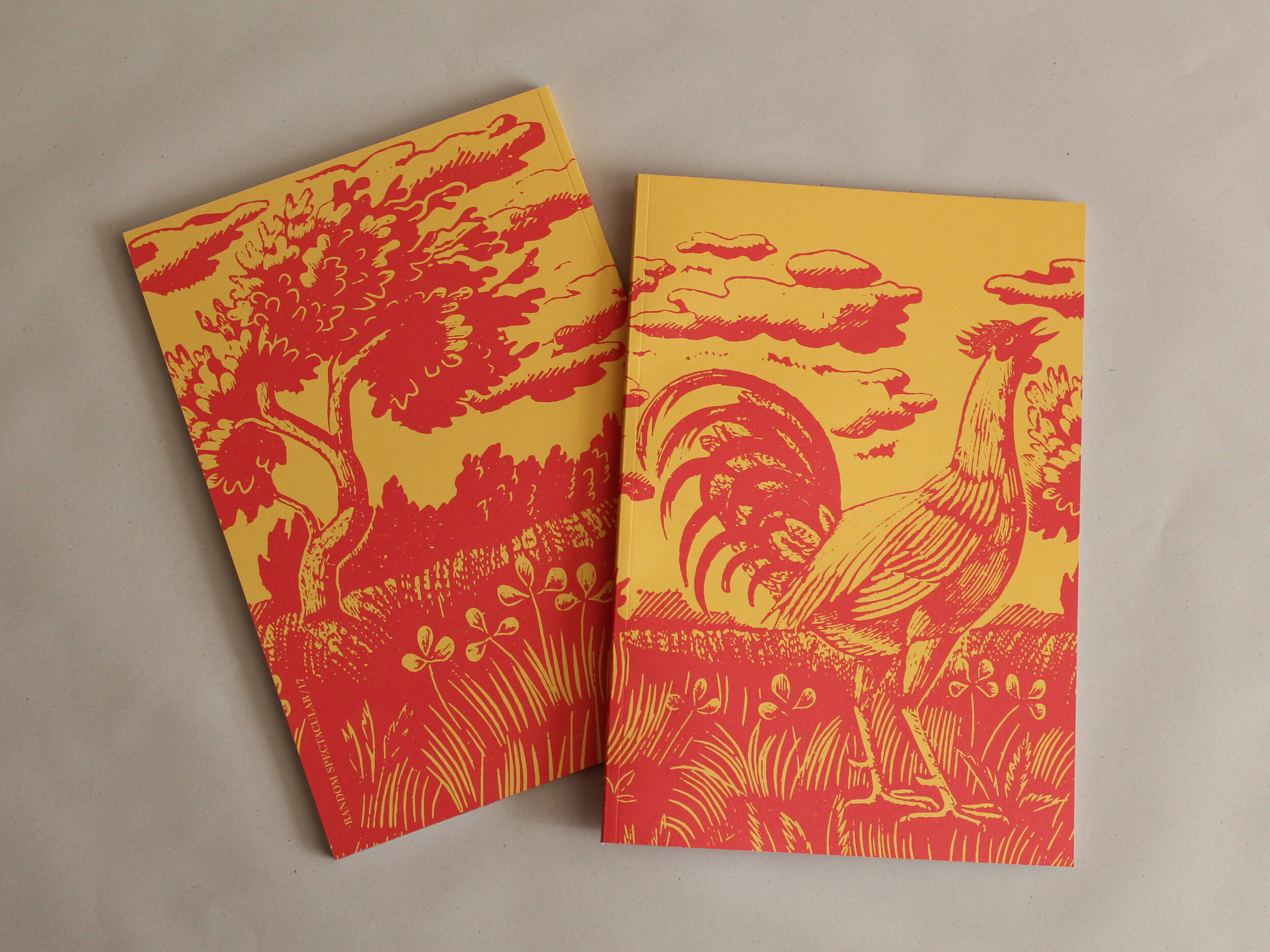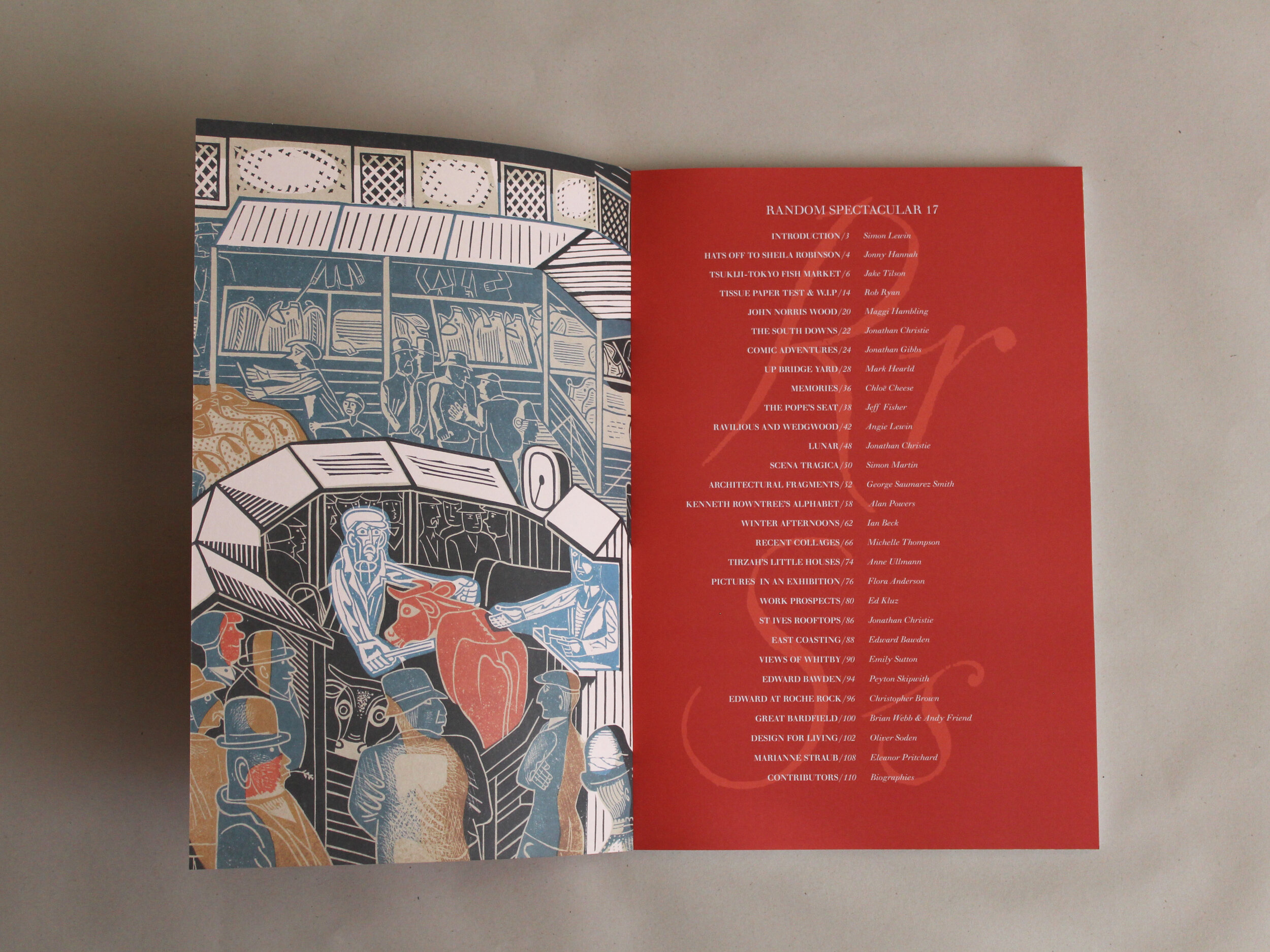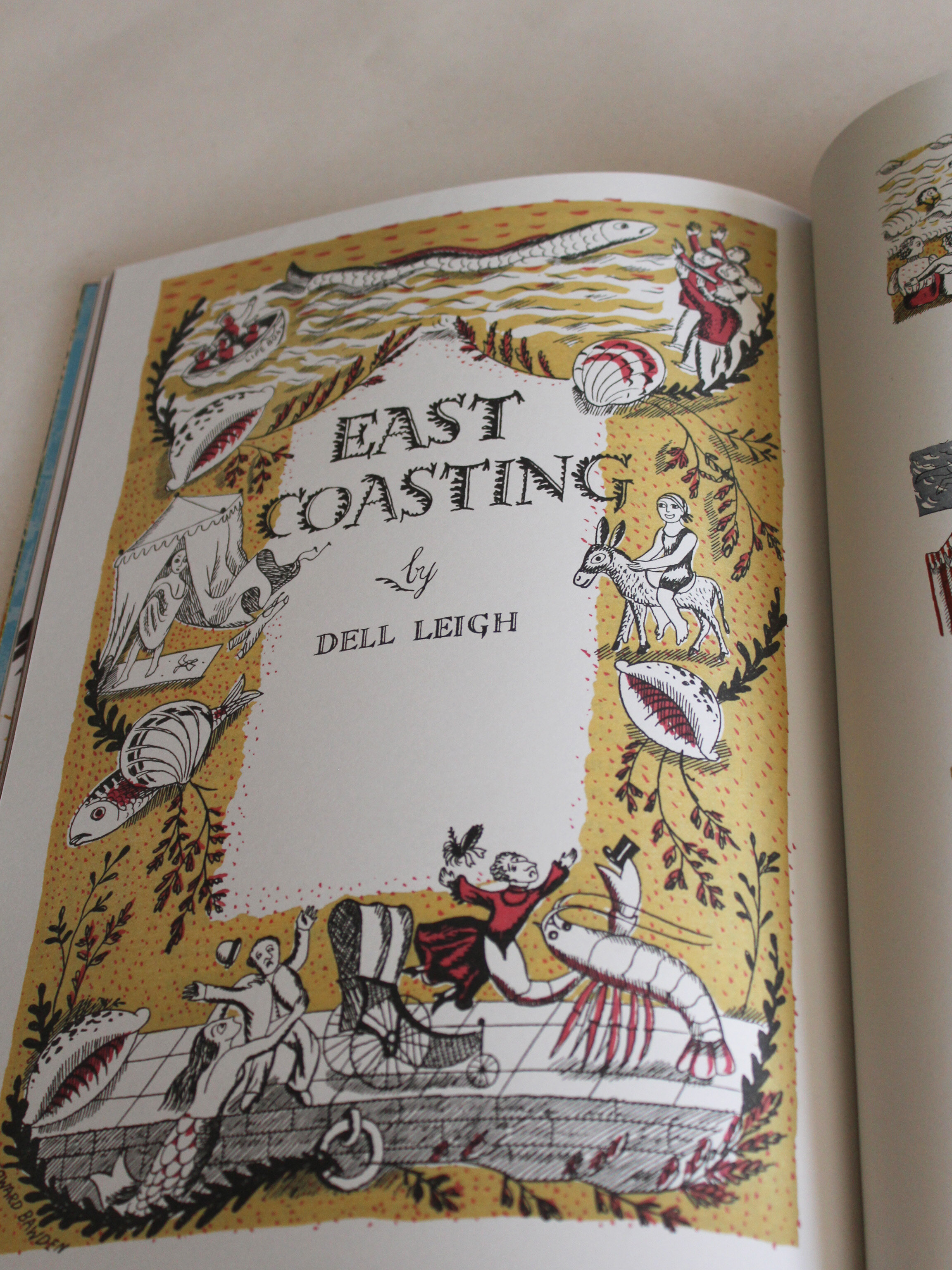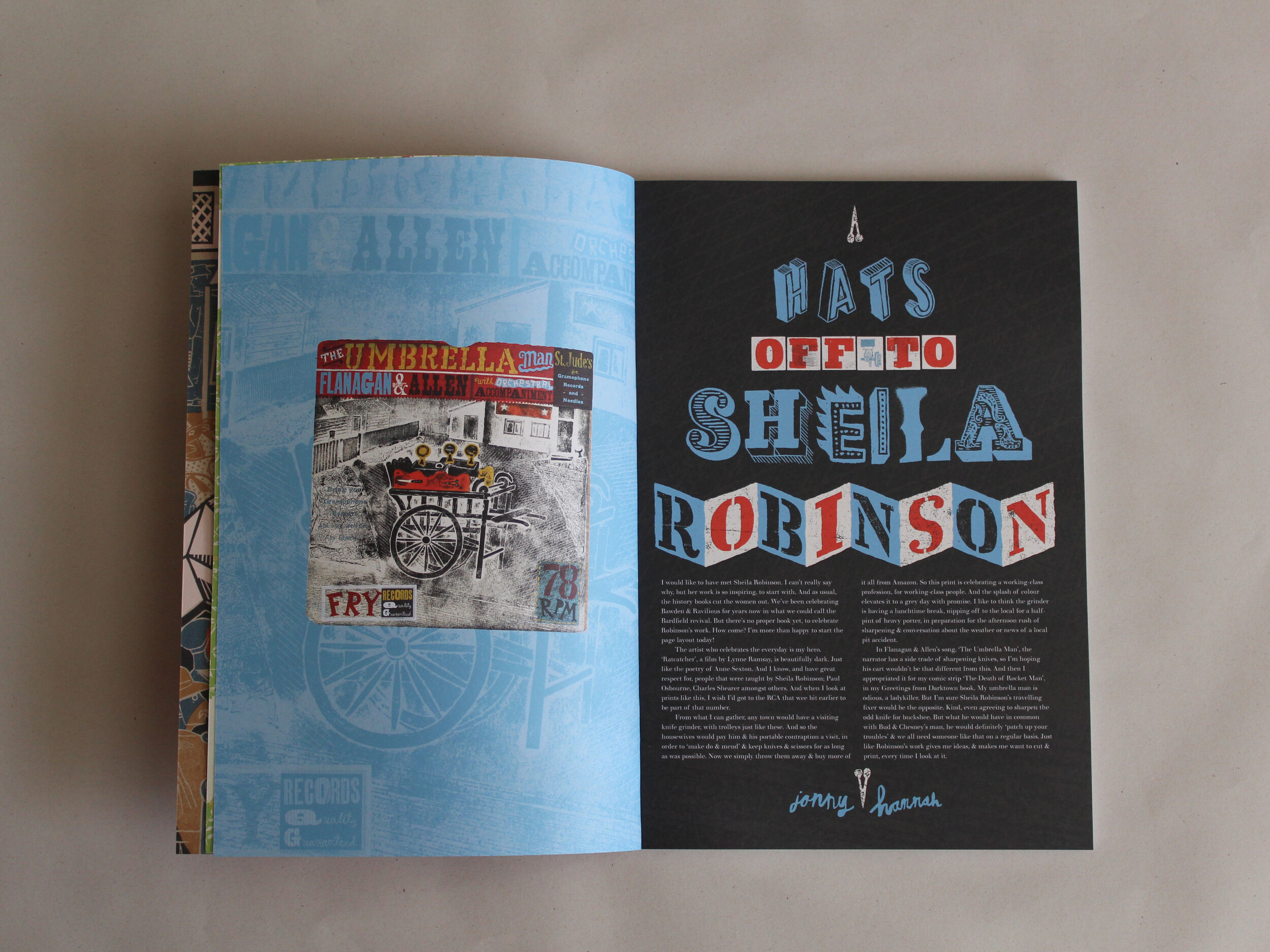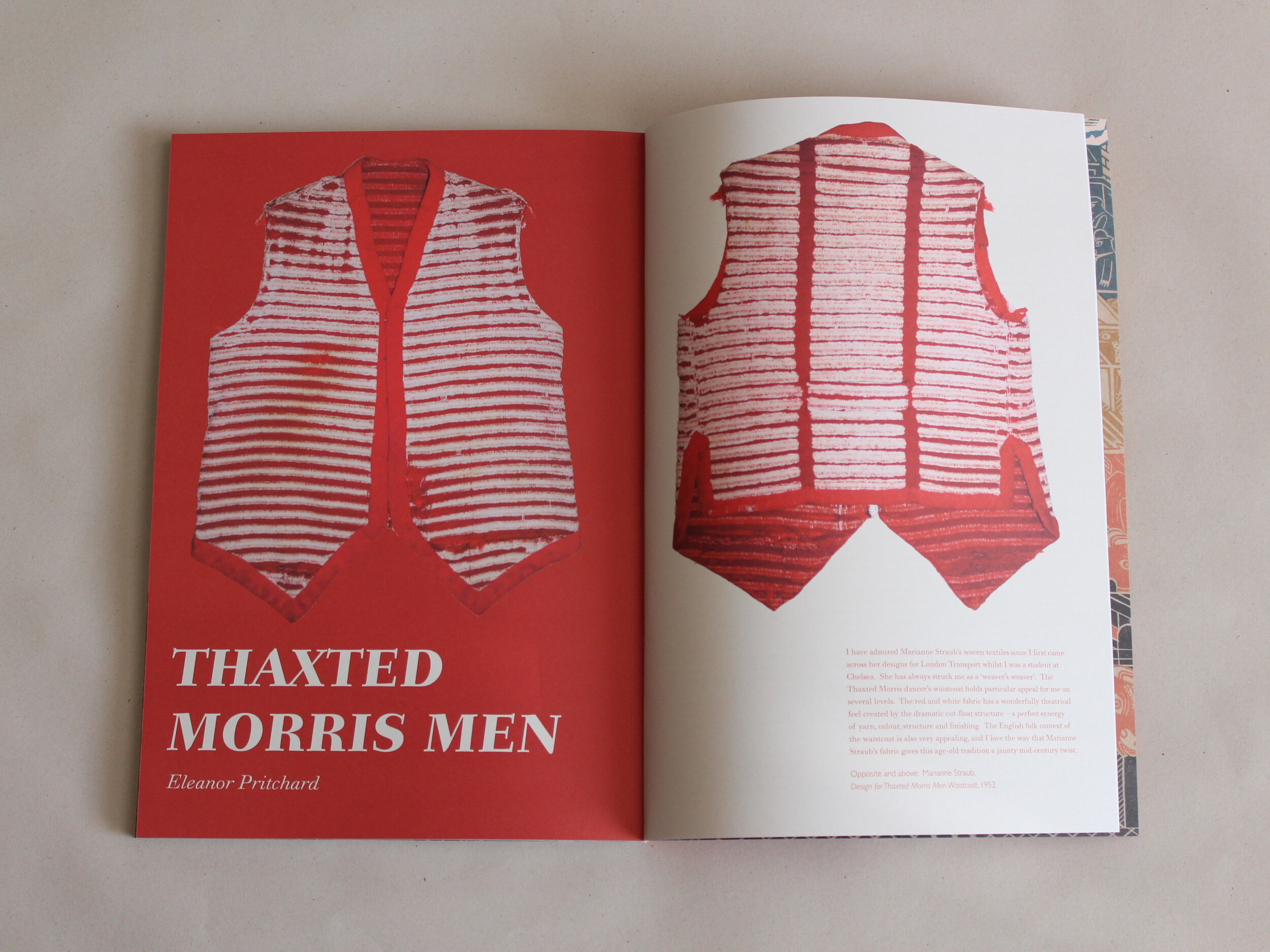Random Spectacular
What a pleasure to receive the latest edition of Random Spectacular. It is the seventeenth edition of this excellent publication, masterminded by Simon Lewin and produced by St Jude’s in conjunction with the Fry Gallery.
The issue accompanies an exhibition of the same name at the Fry Gallery, and although sadly the gallery is currently closed to visitors, there is a lovely video with highlights from the show here.
This marvelous crowing rooster on the cover is based on Eric Ravillious’ Chanticleer - a 1935 wood engraving made for the Golden Cockerel Press.
The contents page - flanked by beautiful end papers from Edward Bawden’s 1937 lithograph Cattle Market - reads like a roll-call of the great and the good of British arts, crafts, theatre and design.
As Simon Lewin writes in the introduction:
The exhibition itself showcases an unusual mix of work from the gallery’s permanent collection, much of which has not been shown in recent years. It is not thematic and the eclectic selection of work has been largely curated by over forty individuals from various areas of the arts worlds including visual arts, music, theatre, writing and design.
This journal features written and visual contributions from a number of these curators and it intended to echo the spirit of both the exhibition and our previous Random Spectacular Journals, rather than acting as a catalogue.
These are two of my favourite pages - above, the title page to Dell Leigh’s 1931 travel guide East Coasting with illustrations by Edward Bawden; and below an homage to Sheila Robinson featuring her Knife Grinder by Johnny Hannah.
My own contribution was the text to accompany this wonderful Thaxted Morris Men’s waistcoat, made in a beautiful cut-float fabric by weave icon Marianne Straub. The text reads:
I have admired Marianne Straub’s woven textiles since I first came across her designs for London Transport whilst I was a student at Chelsea. She has always struck me as a ‘weaver’s weaver’. The Thaxted Morris dancer’s waistcoat holds particular appeal for me on several levels. The red and white fabric has a wonderfully theatrical feel created by the dramatic cut-float structure – a perfect synergy of yarn, colour, structure and finishing. The English folk context of the waistcoat is also very appealing, and I love the way that Marianne Straub’s fabric gives this age-old tradition a jaunty mid-century twist.
There is much more about Marianne Straub and the waistcoat in my very latest post here.

